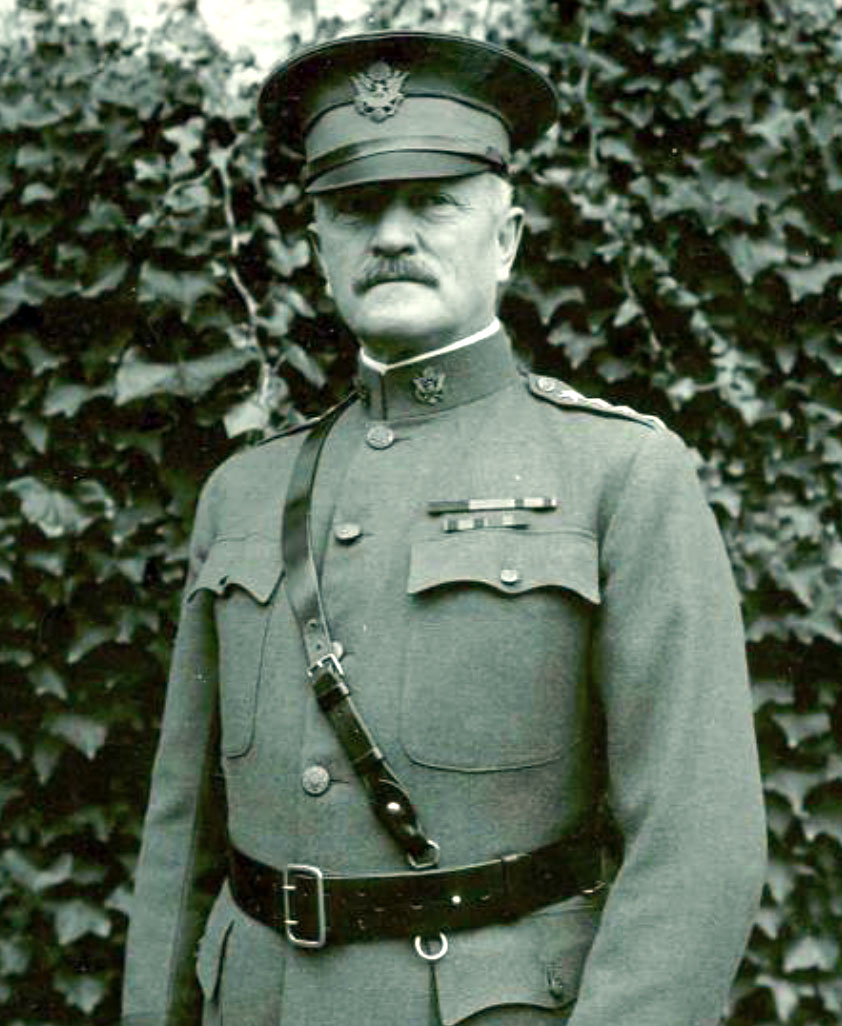Comments regarding
General John J. 'Black Jack' Pershing
| Military related information:
Commanding General of the A.E.F. - American Expeditionary Forces Enroute to France: |
Biography: https://historicmissourians.shsmo.org/historicmissourians/name/p/pershing/ John J. Pershing was one of America’s most accomplished generals. He is most famous for serving as commander of the American Expeditionary Forces in World War I. These troops from America bolstered the spirits of European allies and helped defeat the Central Powers in 1918. Congress promoted Pershing to the rank of “General of the Armies of the United States” in 1919. He and George Washington are the only two people who have received this honor. |
| Post War Known Addresses: |
| Death Information: Date; Age; Cause; Burial Location |
| Miscellaneous: |
 |
|
From article linked above: Wilson . . . gave Pershing a written order before his departure for Europe forbidding him from amalgamating American forces. Pershing stubbornly held to his position that American forces would only fight under a completely American chain of command on a distinctly American section of the western front. At one point, he even told French Premier Georges Clemenceau that he was prepared to see allied forces pushed back to the Loire River (meaning the loss of Paris) rather than amalgamate American forces into larger European units. |